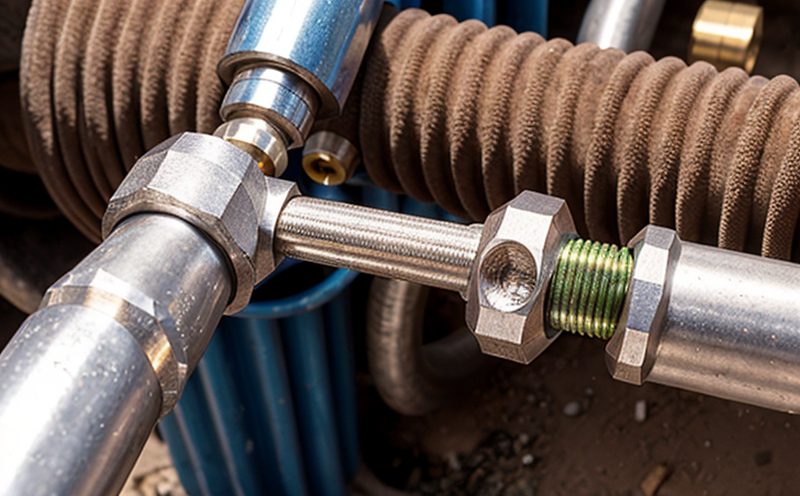Hose coupling inspection
In fire safety and protection systems, hose couplings play a critical role in ensuring the seamless operation of firefighting equipment. These couplings connect different components of the water supply system, allowing for the safe transfer of pressurized water to the nozzle or other firefighting tools. A hose coupling inspection is an essential part of maintaining the integrity and reliability of these systems, thereby enhancing overall fire safety.
The primary purpose of a hose coupling inspection is to ensure that all couplings meet specific standards and are in good working condition. This involves checking for signs of wear and tear, corrosion, or damage that could compromise their performance during an emergency. The inspection process typically includes visual examination, pressure testing, and other checks designed to identify any potential issues before they lead to a failure.
One key aspect of hose coupling inspection is the material used in their construction. Fire hoses often use materials such as rubber or synthetic polymers that are resistant to high-pressure water flow and extreme temperatures. The integrity of these materials can be compromised over time due to environmental factors like UV exposure, chemical reactions, or mechanical stress. Regular inspections help identify any degradation early on so that repairs or replacements can be made promptly.
Another important factor is the design and manufacturing standards followed by manufacturers. Compliance with recognized international standards such as ISO 3516:2017, ASTM F1894-14a, and EN 14607 ensures that couplings are built to withstand the demands placed upon them during use. These standards outline detailed requirements regarding dimensions, surface finish, thread geometry, and material properties among others.
During a typical hose coupling inspection, technicians perform various tests to evaluate different aspects of each coupling’s performance. Visual inspections involve examining the exterior for any visible signs of damage or deterioration. Pressure testing evaluates how well the coupling holds pressure when subjected to high water flow rates under specified conditions. Other tests may include checking for leaks using specialized equipment like soap bubble solutions or dye penetrant techniques.
The results from these inspections provide crucial information about the condition and reliability of each coupling. Any discrepancies found are recorded along with recommendations for corrective actions such as repair, replacement, or further monitoring. By following this rigorous inspection process, organizations can ensure that their firefighting equipment remains in top-notch condition at all times.
Regular hose coupling inspections contribute significantly to enhancing fire safety by preventing potential failures within the water supply system. This proactive approach not only improves operational efficiency but also reduces risks associated with unexpected malfunctions during critical situations like fires or other emergencies.
Benefits
Performing regular hose coupling inspections offers numerous benefits that contribute to improved fire safety and protection systems performance:
- Enhanced Safety: Ensures that all components are functioning correctly, reducing the risk of failure during emergencies.
- Prolonged Equipment Lifespan: By identifying issues early on, inspections help extend the useful life of fire hoses and couplings.
- Compliance with Standards: Meeting required international standards helps maintain regulatory compliance, which is crucial for both legal and operational reasons.
- Economic Savings: Preventive maintenance reduces costly repairs or replacements that might be needed if problems are left unaddressed until they become severe.
- Improved Efficiency: Well-maintained equipment operates more efficiently, leading to better resource utilization and reduced downtime.
- Increased Confidence: Regular inspections boost confidence among personnel responsible for operating firefighting equipment, knowing that everything is in optimal condition.
In summary, hose coupling inspections are vital components of any comprehensive fire safety strategy. They provide peace of mind by ensuring readiness when it matters most – during actual emergencies.
Why Choose This Test
Selecting the right test methods for hose couplings is critical to ensure they meet required standards and perform reliably under various conditions. Here’s why choosing a comprehensive hose coupling inspection can be advantageous:
- Accurate Assessment: Utilizing advanced testing techniques allows for precise evaluation of each coupling's condition, providing accurate results.
- Detailed Reporting: Comprehensive reports offer detailed insights into the current state of couplings, aiding informed decision-making processes.
- Early Detection: Early identification of potential issues prevents minor problems from escalating into major failures.
- Cost-Effective Solutions: By addressing small issues promptly, costly replacements or repairs can be avoided down the line.
- Regulatory Compliance: Meeting relevant standards ensures that all couplings comply with local regulations and international best practices.
- Enhanced Reputation: Demonstrating commitment to quality control through regular inspections enhances an organization's reputation among stakeholders.
In conclusion, choosing a thorough hose coupling inspection process is not just about meeting minimum requirements but also about ensuring excellence in fire safety and protection. It provides valuable assurance that critical components are always up-to-standard, contributing significantly to overall operational effectiveness and reliability.
Customer Impact and Satisfaction
The impact of hose coupling inspections extends beyond mere compliance with regulations; it directly influences customer satisfaction and trust in the services provided. By ensuring that fire protection systems are always in top condition, organizations demonstrate a strong commitment to safety and reliability.
Clients benefit from knowing that their facilities have robust, dependable equipment capable of performing reliably during emergencies. This confidence fosters better relationships between service providers and clients, leading to increased customer satisfaction levels. Moreover, satisfied customers are more likely to recommend these services to others, creating a positive feedback loop that enhances reputation and market position.
From an operational standpoint, having well-maintained hose couplings leads to smoother operations with fewer disruptions due to unexpected failures. This stability contributes significantly to overall productivity and efficiency, allowing businesses to focus on core activities without worrying about potential issues arising from firefighting equipment.
In summary, hose coupling inspections have a profound effect on customer perceptions and experiences. They reinforce trust, promote operational excellence, and ultimately drive business success by enhancing safety standards and meeting regulatory expectations.





